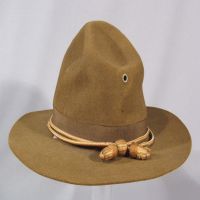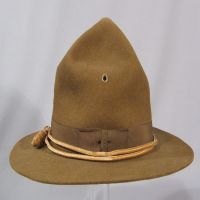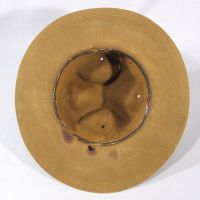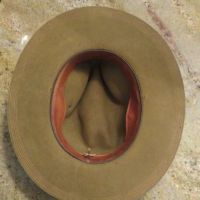Campaign Hat
The campaign hat, with a soft wide brim, was first introduced in 1872 to American soldiers in the western United States. A second model with a stiffer brim was released in 1876. The U.S. Army intended for the caps to protect against sun, wind, and rain. Each model featured a soft crown with creases in both the front and the rear. In 1883 an improved model with ventilation holes, a tan color, and lighter fabric was released. In 1899 the campaign hat changed again when the Army permitted the use of metal unit insignia, a practice beginning in the Spanish American War (1898). Soldiers placed the stylized ornaments, the most popular being a set of crossed swords, on the front of their caps. Eventually, this practice became standard, and the insignia denoted unit membership.
Hat cords also made there way onto campaign hats. Generals wore golden cords, commissioned officers gold and black, warrant officers silver and black, and enlisted men wore cords in the color of their service branch. Early cords had tassels until an 1899 regulation required acorn ends. Until 1921 the Army used mixed color cords to denote service branch. The only exception to this policy was machine gun units in World War I. They used single color cords (light blue for infantry and yellow for cavalry) and red acorns. After 1921 the Army switched to single color cords with different color acorns to denote branches.
Back to UNIFORMS PAGE







